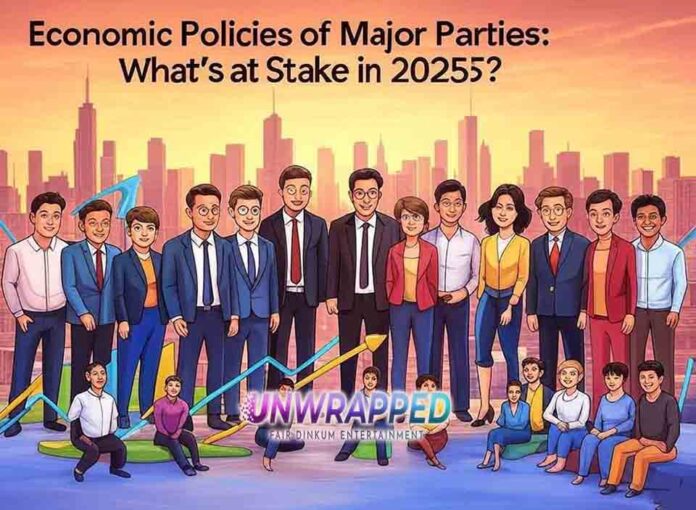As the 2025 Australian Federal Election looms, economic policy is set to be a defining issue. With the cost of living rising, housing affordability under pressure, and climate change impacting key industries, voters are keen to understand how the Labor Party, the Coalition, and other political players plan to navigate these challenges. Each party brings a distinct approach to managing Australia’s economy, shaping the nation’s future in profound ways.
In this article, we’ll explore the economic policies of major political parties, compare their approaches, and discuss what’s at stake for Australian voters in 2025.
Why Economic Policies Matter
Economic policies directly affect Australians’ daily lives, influencing:
- Wages and job opportunities.
- Cost of living, including housing and energy prices.
- Funding for public services like healthcare and education.
- Long-term financial stability and growth.
For voters, understanding the key differences between parties’ policies is essential for making informed decisions.
Labor Party’s Economic Policies
1. Cost of Living Relief
Labor’s focus has been on easing financial pressure for middle- and lower-income Australians. Their policies include:
- Energy Price Caps: Introducing temporary caps on energy prices to combat rising bills.
- Cheaper Childcare: Expanding subsidies under the Cheaper Childcare Plan, benefiting working families.
- Wage Growth: Advocating for real wage increases to keep up with inflation.
(Learn more: Labor’s Policy Platform)
2. Housing Affordability
Labor aims to address the housing crisis through:
- Building 1 million new affordable homes in partnership with states, territories, and private developers under the National Housing Accord.
- Expanding the Help to Buy scheme, enabling first-home buyers to enter the market with government assistance.
3. Climate and Clean Energy Investments
Labor’s economic strategy heavily integrates climate policy, emphasizing:
- Investments in renewable energy projects.
- Funding for green jobs in sectors like solar and wind energy.
Coalition’s Economic Policies
1. Tax Cuts and Incentives
The Coalition continues to advocate for:
- Stage 3 Tax Cuts: Delivering lower tax rates for middle- and high-income earners, aiming to stimulate spending and economic growth.
- Small business support through tax incentives and grants.
(Learn more: Liberal Party Policy Platform)
2. Energy Security
While supporting renewable energy, the Coalition emphasizes maintaining energy security by:
- Investing in natural gas and carbon capture technologies.
- Ensuring affordable and reliable energy for businesses and households.
3. Infrastructure Investments
The Coalition prioritizes infrastructure projects to drive economic growth, including:
- Road and rail developments.
- Funding for regional connectivity and development.
Comparing Labor and Coalition on Key Issues
Cost of Living
- Labor: Focuses on immediate relief through subsidies and wage growth.
- Coalition: Advocates for tax cuts as a long-term solution to increase disposable income.
Housing
- Labor: Direct intervention with large-scale affordable housing projects.
- Coalition: Market-driven approach, offering incentives to developers and buyers.
Climate Policy
- Labor: Integrates clean energy investment into its economic strategy.
- Coalition: Balances renewable energy goals with support for traditional industries.
The Greens and Economic Reform
The Greens present a more progressive economic platform, centered on:
- Universal Housing: Expanding social housing to eliminate homelessness.
- Climate Emergency Response: Phasing out coal and gas industries and transitioning to 100% renewable energy.
- Wealth Tax: Introducing higher taxes on billionaires and large corporations to fund social programs.
(Learn more: The Greens Policy)
Key Economic Challenges for 2025
1. Inflation and Interest Rates
With inflation still a concern, managing interest rates and household debt levels will be a major challenge for the next government.
2. Housing Crisis
Rising rents and property prices have placed housing affordability at the center of the political debate.
3. Climate and Economic Resilience
Australia faces increasing economic risks from climate change, including impacts on agriculture, energy, and insurance industries.
What’s at Stake for Voters?
The 2025 election will determine how Australia tackles critical issues like:
- Who benefits most: Will economic policies favor lower-income families, middle-class voters, or high-income earners?
- Future industries: The role of renewables and clean energy in Australia’s economic growth.
- Debt and spending: Striking the right balance between government spending and fiscal responsibility.
How to Stay Informed
1. Compare Party Platforms
Visit official party websites and trusted news sources for comprehensive policy details:
2. Engage in Local Forums
Attend town halls and debates in your electorate to ask candidates about their economic policies.
3. Follow Expert Analysis
Trusted sources like ABC News, The Guardian, and The Conversation provide in-depth analysis of economic issues and party platforms.
(Explore election coverage: ABC News Election Hub)
Conclusion: The Economic Stakes of the 2025 Election
The 2025 Australian Federal Election offers voters a choice between distinct economic visions. Labor emphasizes immediate relief and long-term investments in housing and clean energy, while the Coalition focuses on tax cuts, energy security, and infrastructure development. The Greens propose bold reforms aimed at wealth redistribution and climate action.
As economic challenges like inflation, housing affordability, and climate resilience dominate the agenda, voters must critically evaluate each party’s policies to determine which aligns with their priorities. What economic policies matter most to you? Share your thoughts in the comments below, and don’t forget to cast your vote—it’s your chance to shape Australia’s future.
External Resources
See Also: The Role of Social Media in Shaping the 2025 Election Campaigns










